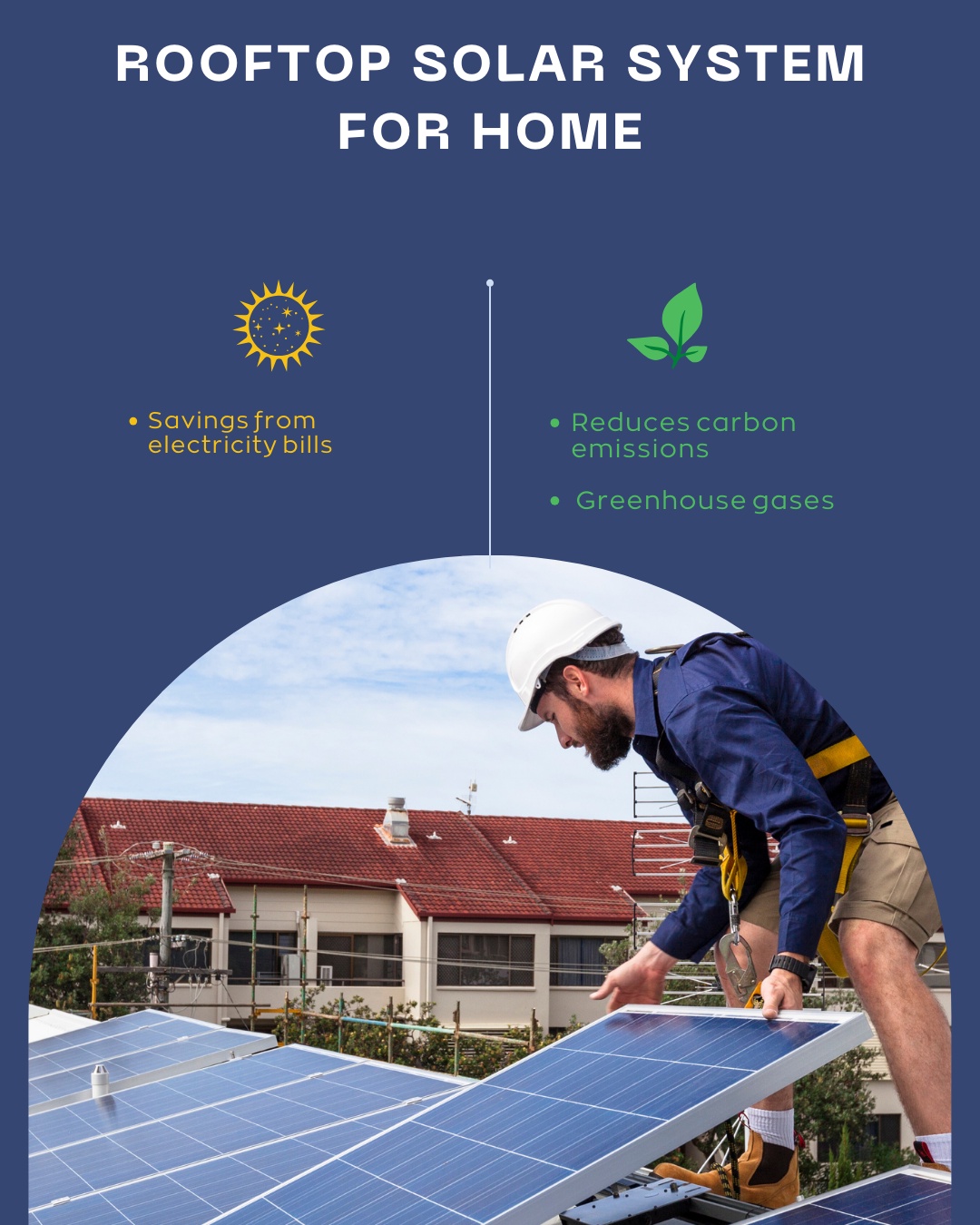Introduction:
In recent years, rooftop solar systems have gained immense popularity as a sustainable and cost-effective way to generate clean energy for homes. Harnessing the power of the sun, these systems provide numerous benefits, from reducing electricity bills to contributing to a greener environment. This comprehensive guide will walk you through everything you need to know about rooftop solar systems for your home.
- Understanding Rooftop Solar Systems:
- Components:
- Solar Panels: Photovoltaic (PV) cells in solar panels convert sunlight into electricity.
- Inverter: Converts DC electricity produced by solar panels into AC electricity used in homes.
- Mounting Structure: Supports and secures solar panels on the roof.
- Types of Solar Panels:
- Monocrystalline: High efficiency, sleek design, and space-efficient.
- Polycrystalline: Slightly less efficient than monocrystalline but more affordable.
- Thin-Film: Flexible and lightweight, suitable for certain roof types.
- Assessing Your Home's Solar Potential:
- Roof Orientation and Tilt:
- South-facing roofs in the northern hemisphere or north-facing in the southern hemisphere receive optimal sunlight.
- The ideal tilt angle is often the latitude of your location, but flat roof installations may require special considerations.
- Shade Analysis:
- Identify potential shading from trees, buildings, or other obstructions that may affect solar panel performance.
- Tools like solar path calculators can help assess shading throughout the year.
- Calculating Your Energy Needs:
- Evaluate Your Electricity Usage:
- Examine past utility bills to understand your energy consumption patterns.
- Consider future changes in energy needs, such as adding new appliances or an electric vehicle.
- Sizing Your Solar System:
- A common rule of thumb is to size your system to cover 80-100% of your energy needs.
- Your solar installer will perform a detailed analysis to recommend the right system size.
- Financial Considerations:
- Cost of Installation:
- Factors include the size of the system, quality of components, and installation complexity.
- Incentives and rebates offered by government programs can significantly reduce costs.
- Return on Investment (ROI):
- Calculate the payback period by dividing the installation cost by the annual savings on electricity bills.
- Consider the lifespan of the system (typically 25 years or more) for long-term savings.
- Financing Options:
- Explore financing options, including loans, leases, or power purchase agreements (PPAs).
- Some regions offer solar-specific loans with favorable terms.
- Selecting a Solar Installer:
- Research and Reviews:
- Seek recommendations and read reviews to find reputable solar installers.
- Ensure they are licensed, certified, and have experience in residential installations.
- Get Multiple Quotes:
- Obtain quotes from multiple installers to compare costs, warranties, and equipment options.
- Don't solely base your decision on price; consider the overall value and reputation.
- Installation Process:
- Site Assessment:
- The installer will evaluate your roof, shading, and electrical system to design the optimal solar solution.
- Permitting and Approvals:
- Obtain necessary permits and approvals from local authorities before installation begins.
- Installation Day:
- The actual installation typically takes one to three days, depending on the system size and complexity.
- Inspection and Interconnection:
- Local authorities will inspect the system to ensure compliance with regulations.
- Once approved, the system is connected to the grid, and you can start generating solar power.
- Maintenance and Monitoring:
- Regular Inspections:
- Periodic visual inspections of the solar panels and inverter ensure everything is functioning correctly.
- Cleaning:
- Keep solar panels clean from dirt, dust, and bird droppings to maintain optimal performance.
- Monitoring Systems:
- Many solar systems come with monitoring tools that allow you to track energy production and identify any issues.
- Maximizing Solar Benefits:
- Net Metering:
- Take advantage of net metering programs, which allow you to sell excess energy back to the grid.
- Energy Efficiency:
- Combine solar installation with energy-efficient practices to maximize savings.
- Battery Storage:
- Consider adding battery storage to store excess energy for later use, especially during power outages.
Conclusion:
Investing in a rooftop solar system for your home is a significant step toward a sustainable and energy-efficient future. With this guide, you're well on your way to becoming a solar superhero for your home in Raipur. Rooftop solar systems not only help you save on electricity bills but also make a positive impact on the environment. So, take that first step, find a reliable Rooftop solar system provider in Raipur, and let the sun power your home!


No comments yet